The scans here are taken from a set of 8.5” x 11” photocopies in my files of the thirteenth Megaton Man comic book, which I facetiously call #13; by the time I was at this stage of penciling and lettering, I would have been conscious of the fact that this would be—against my wishes—the third issue of The Return to Megaton Man 3-issue mini-series.
The pages and panels here can be easily mapped to the thumbnails for Megaton Man #11 I made during 1987—when I was still conceiving of it as a 64-page “summer special,” and even more easily to the printed comic book (Kitchen Sink Press, September 1988), since there were very few if any modifications to the visuals.
The copies are of an inferior quality but give some idea of how tightly—or in this case, how loosely—I penciled for myself before I inked. I left a lot of the shading and modeling or feathering to the inking stage; I would continue to experiment with how loose or tight to pencil down to the present day.
No doubt I made these photocopies to send in to editor Dave Schreiner to proofread. Judging from the marginalia, I kept this set to take notes over the phone, which were pretty few. As Dave pointed out, among cartoonists I was not a bad speller, although there was always room for improvement. I then made the corrections on the Bristol board pages, which ordinarily never left my possession, then inked.
I assume I followed the same procedure for issues #1 and #2 of The Return of Megaton Man, but only made and sent a set of photocopies to Dave; I don’t seem to have made a set of 8.5” x 11” photocopies for myself to keep; I probably just made notes on the original art while talking with Dave by phone.
I wrote “ordinarily” above because in the case of The Return of Megaton Man #3, I had shipped the originals to Mark Martins to ink. I liked Mark’s work; we had agreed on a price and I must have had other, more lucrative freelance work. I was looking forward to seeing his inks over my pencils.
The publisher, however, had a conniption fit and demanded I ink the third issue myself. At this point in our relationship, it had long since ceased to feel like “creator-owned” or “independent comics,” and more like “Don Simpson can’t do anything right (!) comics.”
I recalled the pages from Mark, who had gotten as far as inking the naked light bulb and hanging cord on the title page. I pasted over this with an Avery label to maintain consistency. I felt terrible—the whole thing was embarrassing and felt like yet another trauma needlessly inflicted on me, but Mark seemed to understand. I drew Mark a nice, full-color drawing of the Original Golden Age Megaton Man and Liquid Man as compensation.
I also controlled the coloring of The Return of Megaton Man, which was done on greylines with Cel-Vinyl colors. With issue #7 of the original series, I had begun coloring the covers and a portion of each issue. The reason for this was two-fold: For one, I understood the properties and proper application of Cel-Vinyl paint, owing to my experience working on a short animated commercial for Mike Kazaleh, and for another, the colorists—at $50 per page, the highest rate in the industry at the time—were making more from my color comics than I was for writing, drawing, lettering, and inking.
My 8% royalty of the cover price worked out to between $42 and $48 per page—and while in theory the colorists were paid a flat rate, the publisher adamantly refused to reprint sold-out issues so that my IP could earn any additional revenue beyond first-day sales.
Hence, I began to color more and more of each issue of my comics, beginning with the first Border Worlds back-up feature in Megaton Man #7. There was no question, therefore, that I would keep the coloring of The Return of Megaton Man in-house, although I employed several assistants in the Pittsburgh area who are credited in the comics.
Although the main action of the issue takes place in the bullpen of the Gamble Comics Corporation, which has brought Megaton Man back simply to exploit his likeness for comics, merch, and licensing, there are a few important narrative notes.
First, this issue marks the first appearance of a nameless, rabble-rousing writer who will evolve into Paul Nabisco, creator of Gower Goose and protagonist in X-Amount of Comics: 1963 (WhenElse?!) Annual (Fantagraphics, 2023). Also, Clarissa James’ relationship with Bing Gloom (Yarn Man) is rendered graphically, which later trigger her breakout as Ms. Megaton Man. Finally, Stella Starlight gives birth to Trent Phloog’s (Megaton Man’s) love child, who will later be named Simon Phloog.
Although I had in mind that the next story arc would involve the Son of Megaton Man, the revival of the Original Golden Age Megaton Man would end up taking precedence in the fourteenth Megaton Man comic book.
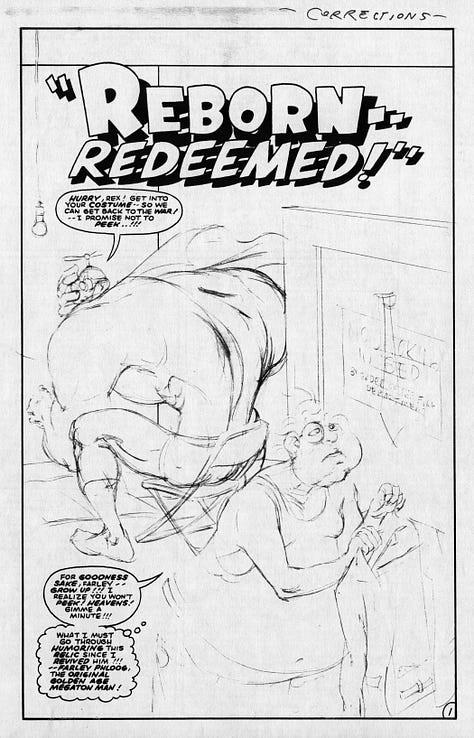
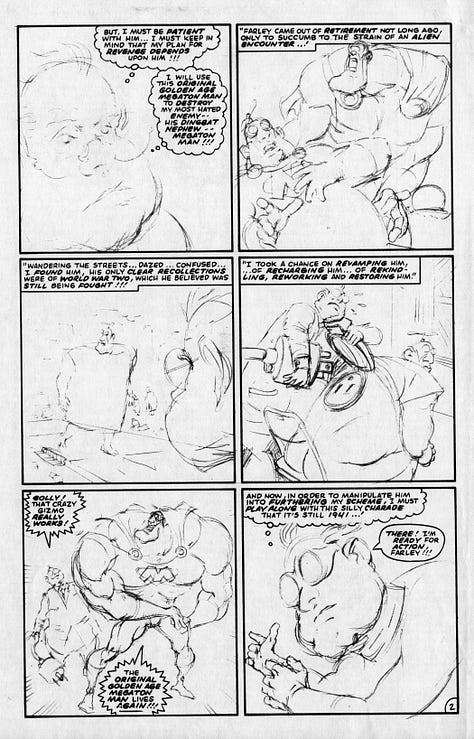
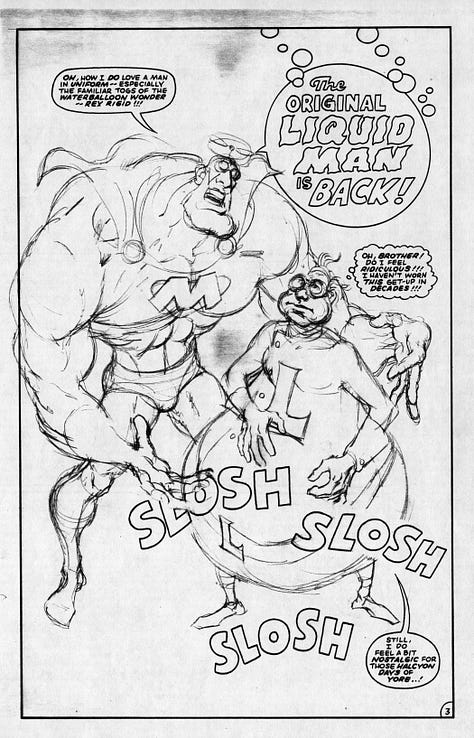

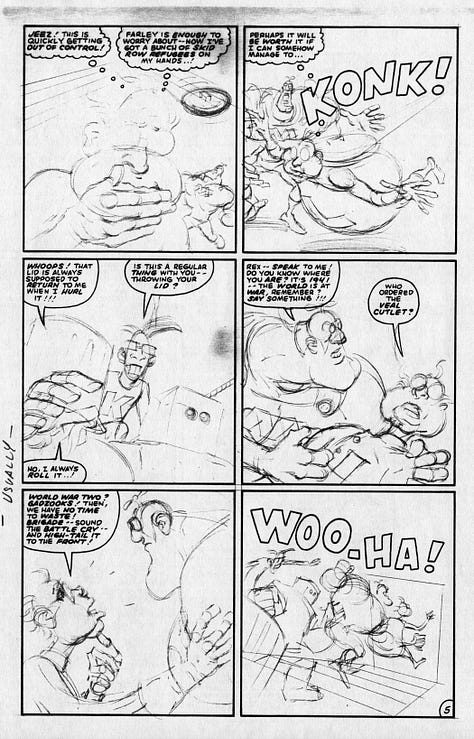
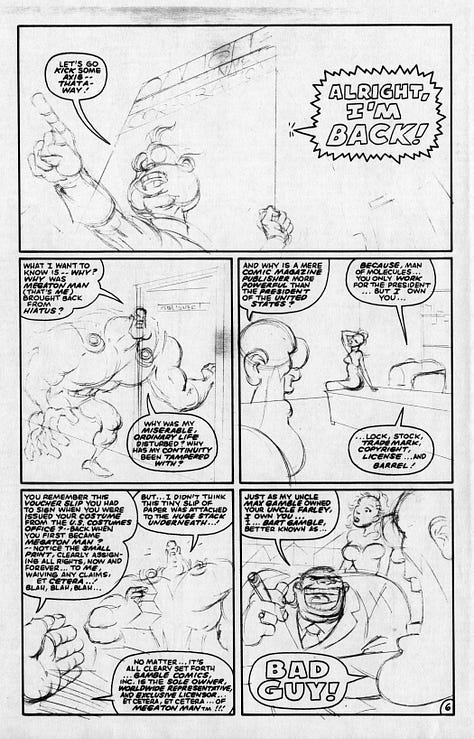
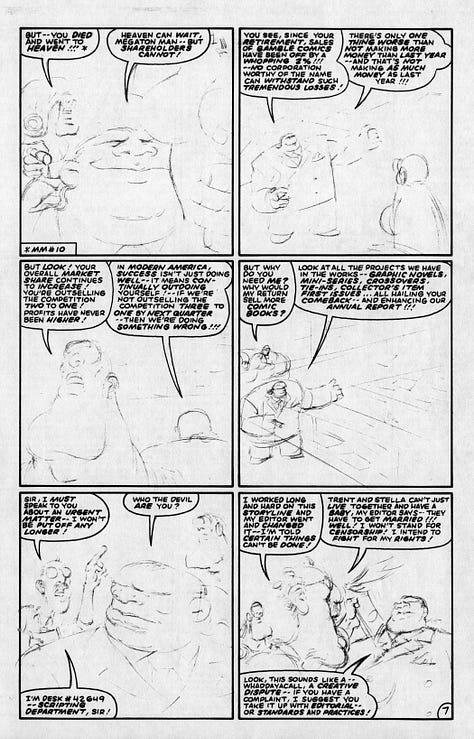
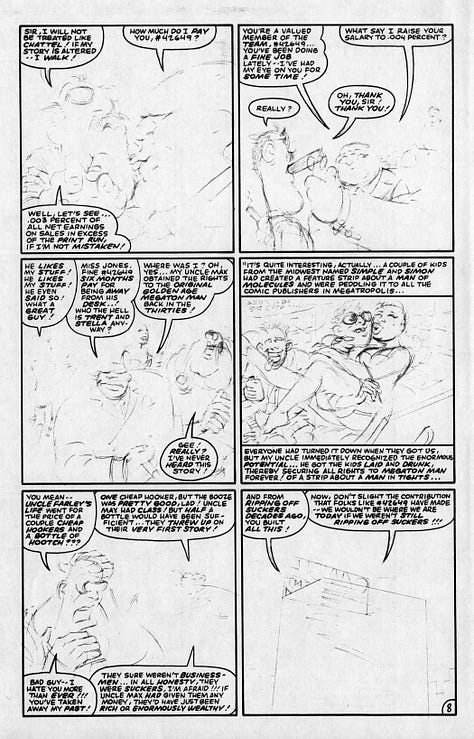

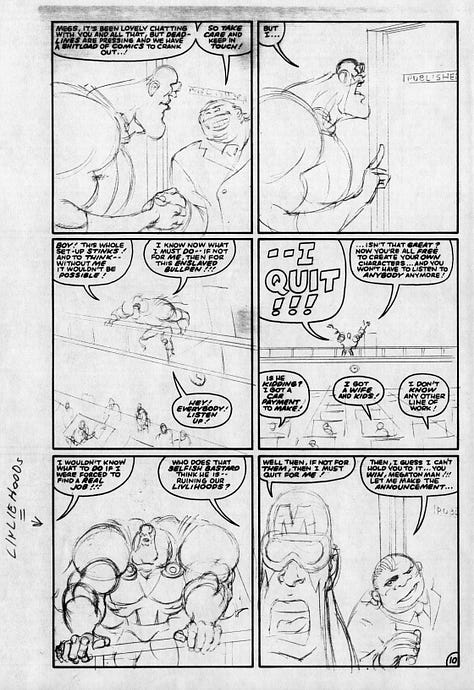
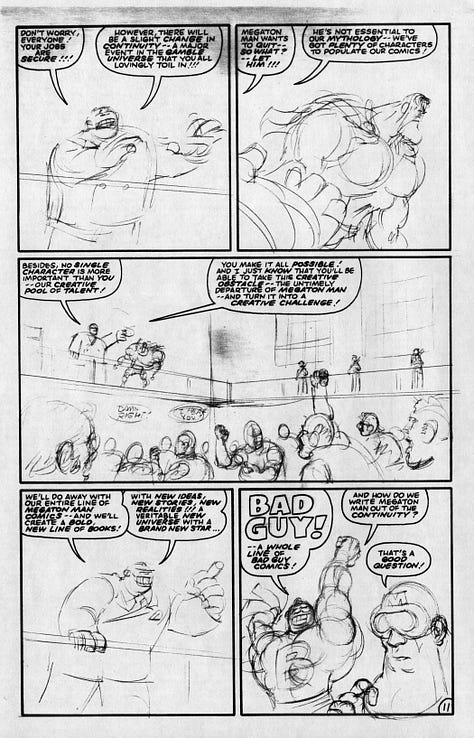

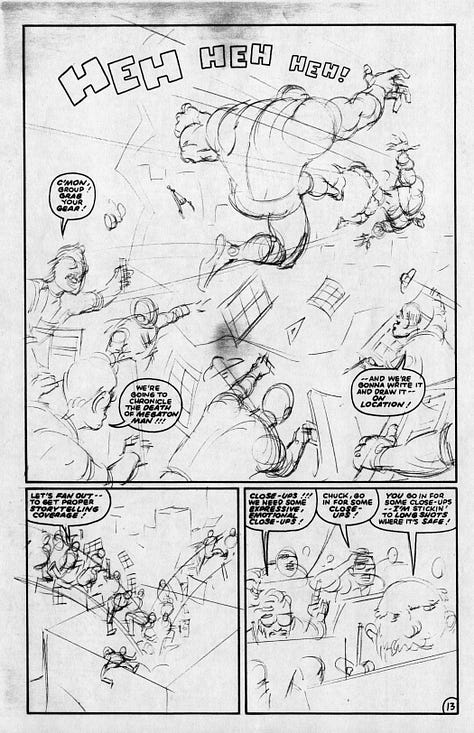
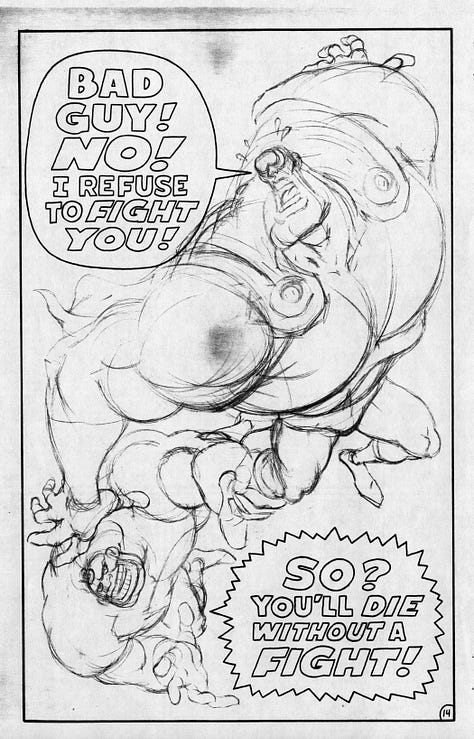

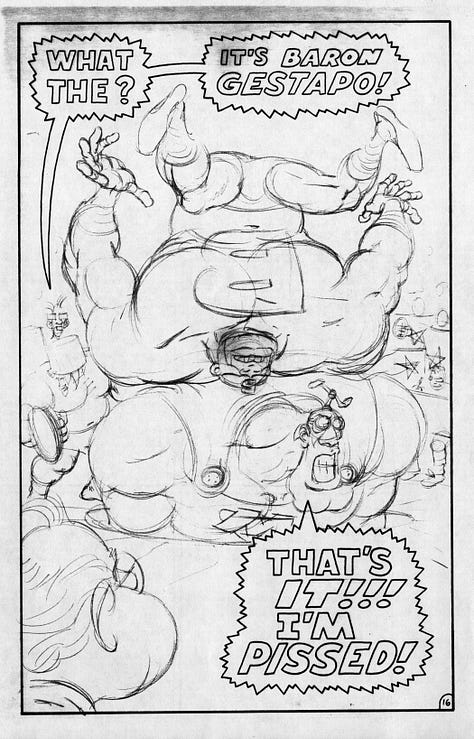
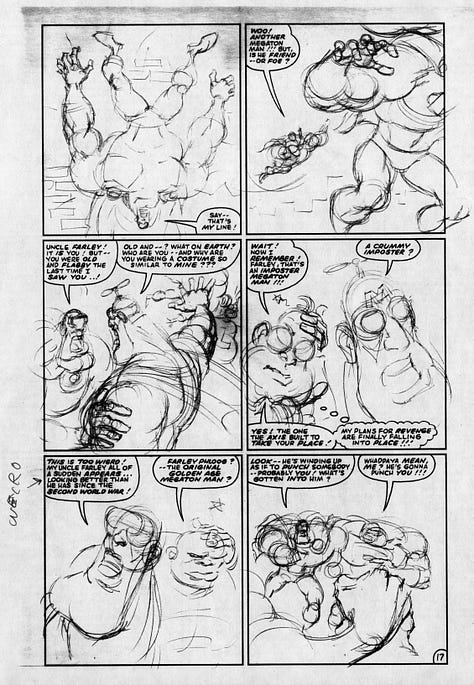
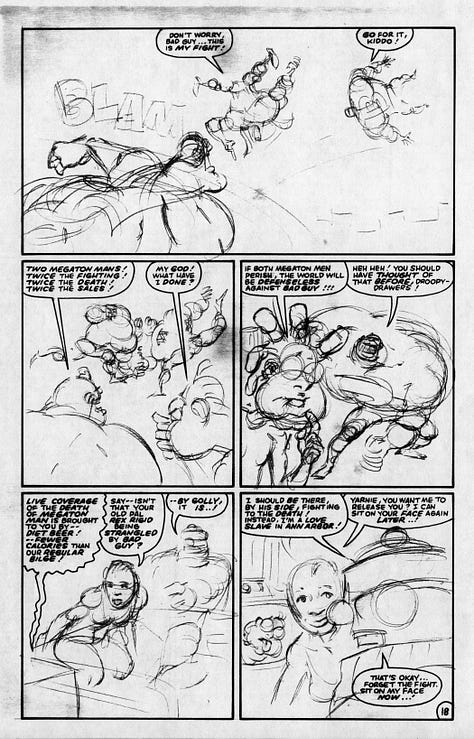
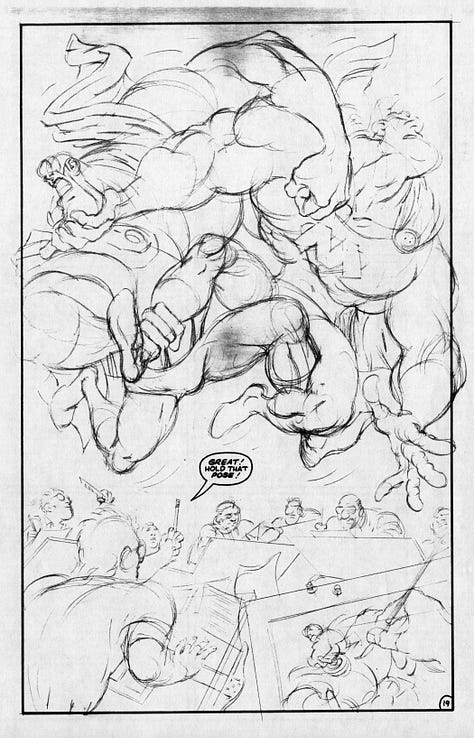




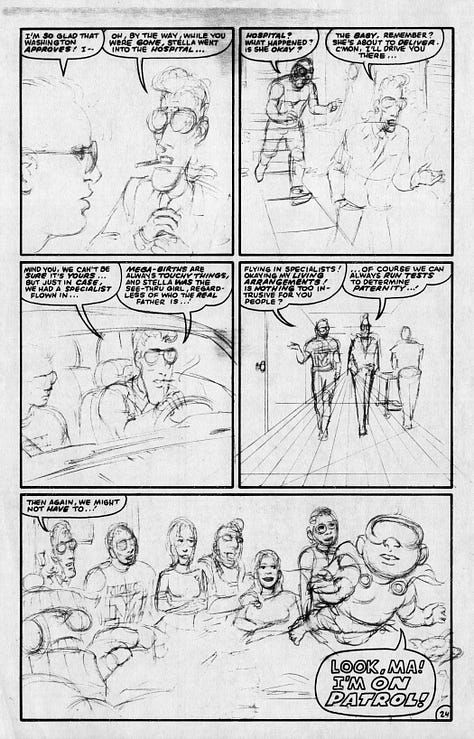





All of these roughs your posting would make a great book!